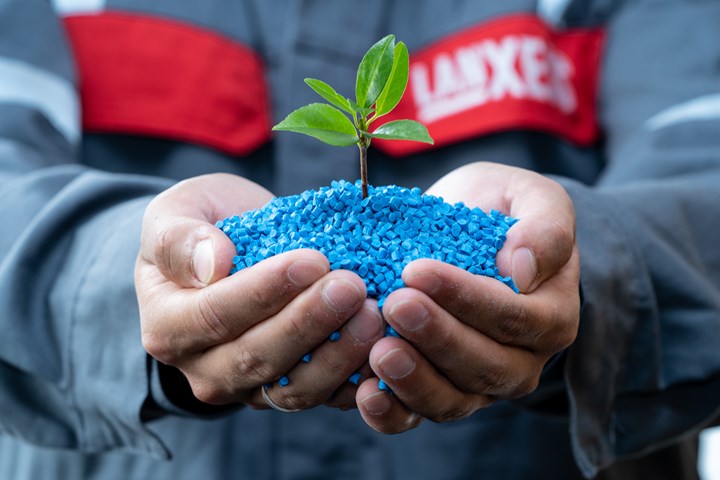Prime Quality Glass-Fiber-Reinforced Nylon 6 with 92% Biobased Content
Lanxess’ new Durethan BlueBKKV60H2.0EF is the first in the Scopeblue series of products that contain at least 50% circular raw materials.
A new 92% biobased prime quality glass-fiber-reinforced nylon 6 is the first product in the new Scopeblue series of materials from Lanxess that either consist of at least 50% circular (recycled or biobased) raw materials, or whose carbon footprint is at least 50% lower than that of conventional products.

One of the raw materials used in the production new Durethan BlueBKV60H2.0EF nylon 6 is cyclohexane from sustainable sources – meaning cyclohexane that is either biobased, recycled biobased or produced by means of chemical recycling. The material is also strengthened with 60% by weight of glass fibers comprising industrial glass waste instead of mineral raw materials. The alternative raw materials that Lanxess uses in the precursors reportedly are chemically identical to their equivalents of fossil origin (“drop-in solutions”), so Durethan BlueBKV60H2.0EF exhibits the same characteristics as the virgin material and can be processed just as easily using exactly the same production tools and facilities with no conversion work needed.
Said Frederique van Baarle, who heads Lanxess’ High-Performance Materials (HPM) division, “A carbon-neutral future can become reality only if we start using more sustainable products. Our first product marketed under the Scopeblue brand represents a real solution for the circular economy. The compound is a certified premium material that’s based on sustainable raw materials.”
According to Guenter Margraf, HPM’s head of global product management, “This high-strength, high-rigidity structural material can be deployed wherever its purely fossil-based equivalent Durethan BKV60H2.0EF has traditionally been used in series production – so in automotive construction for the production of car front ends, brake pedals and oil pans. We’re currently working on increasing the content of sustainable raw materials in this compound to 100%.” This requires ammonia synthesized with carbon-neutral hydrogen. Over the medium term, the specialty chemicals company is also planning to replace the additives used in its plastics with sustainable equivalents.
The sustainable origin of the raw materials is certified to ISCC Plus (“International Sustainability and Carbon Certification”). This applies to not only the Lanxess production sites in Antwerp and Krefeld-Uerdingen but also all precursors originating exclusively from suppliers that are also ISCC Plus-certified.
Related Content
-
Best Practices for Purging PHA and PHA/PLA Blends
Because bioplastics are processed at lower temperatures, purging between jobs requires a different process and purging agents than those applied for traditional resins.
-
PHA Compound Molded into “World’s First” Biodegradable Bottle Closures
Beyond Plastic and partners have created a certified biodegradable PHA compound that can be injection molded into 38-mm closures in a sub 6-second cycle from a multicavity hot runner tool.
-
Avantium and U.S.’s Origin Materials Aim to Accelerate Production of FDCA and PEF
The partnership aims to bring together both companies’ technology platforms to produce FDCA from sustainable wood residues on an industrial scale.







